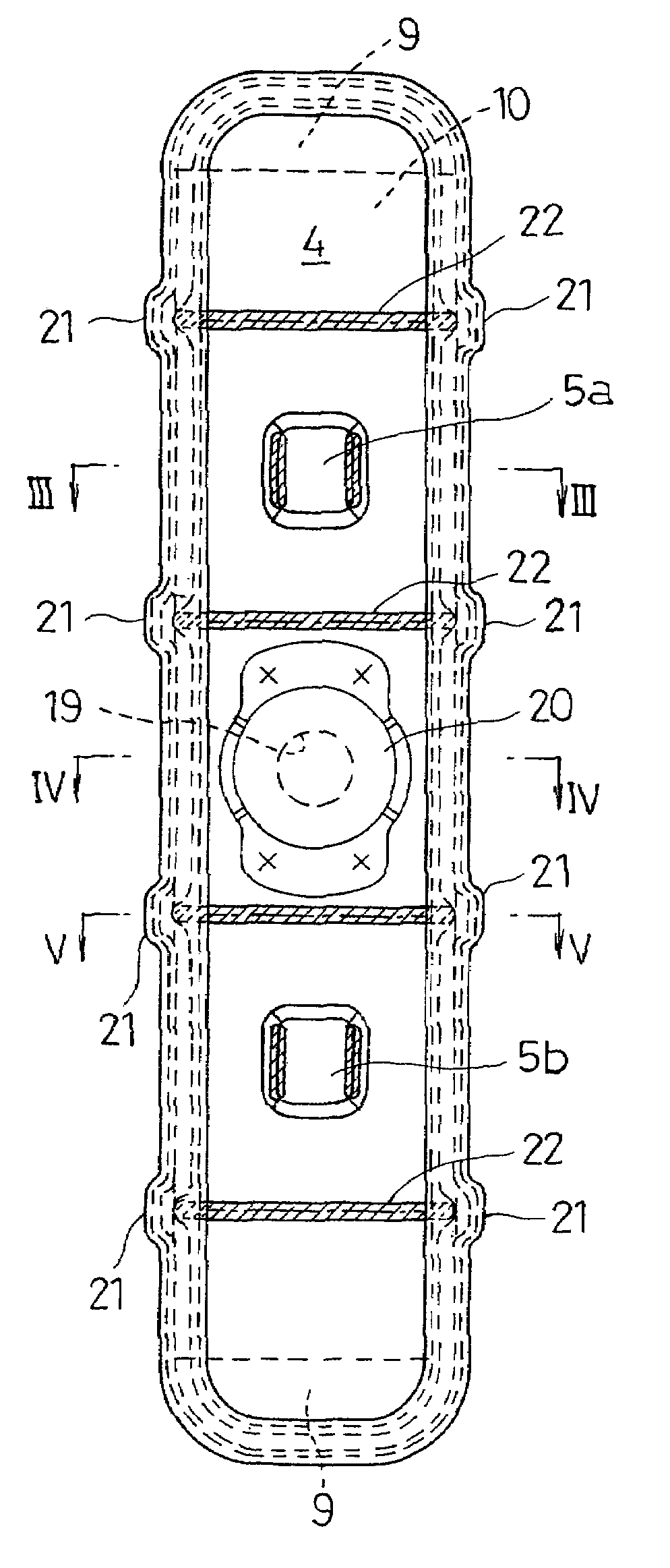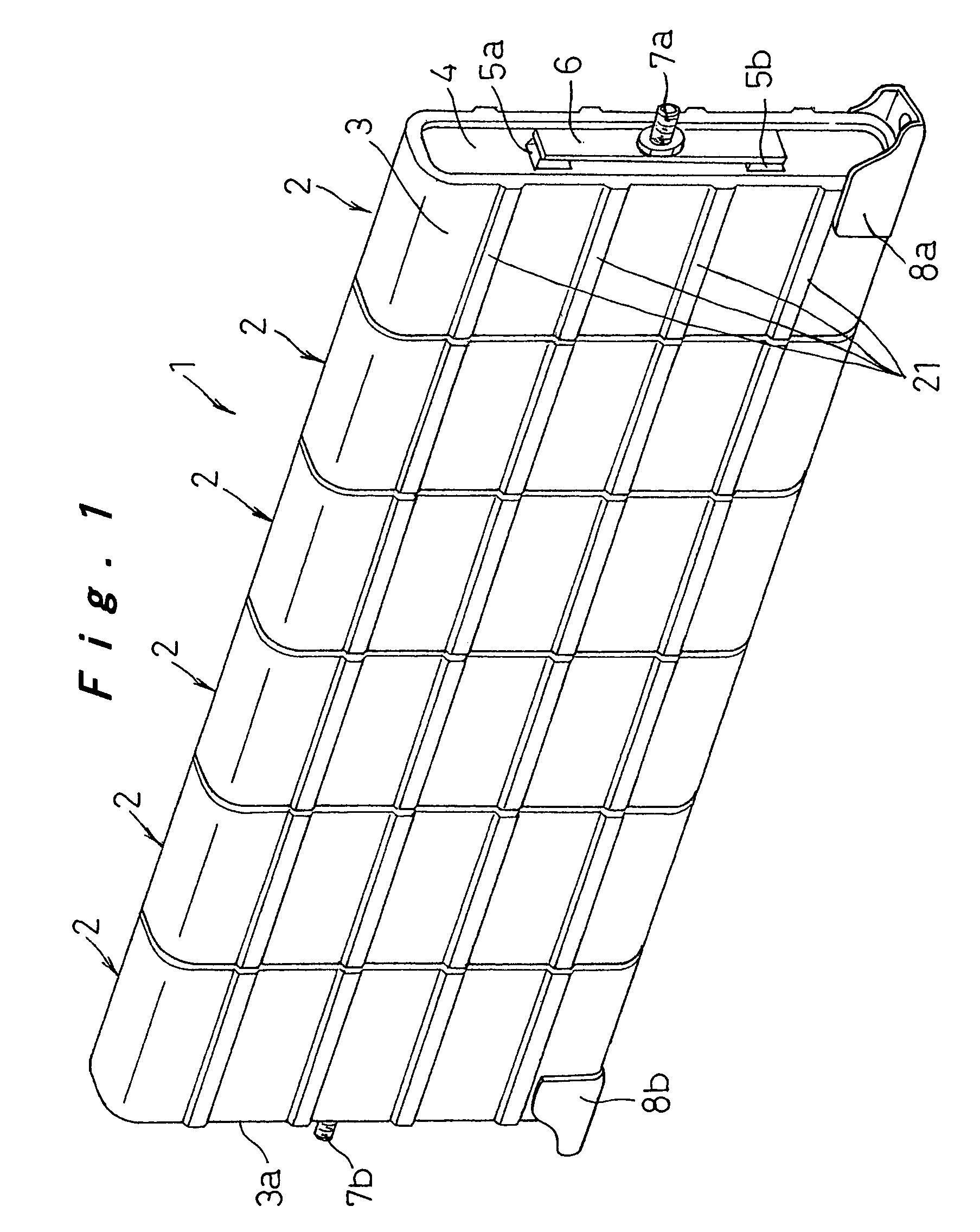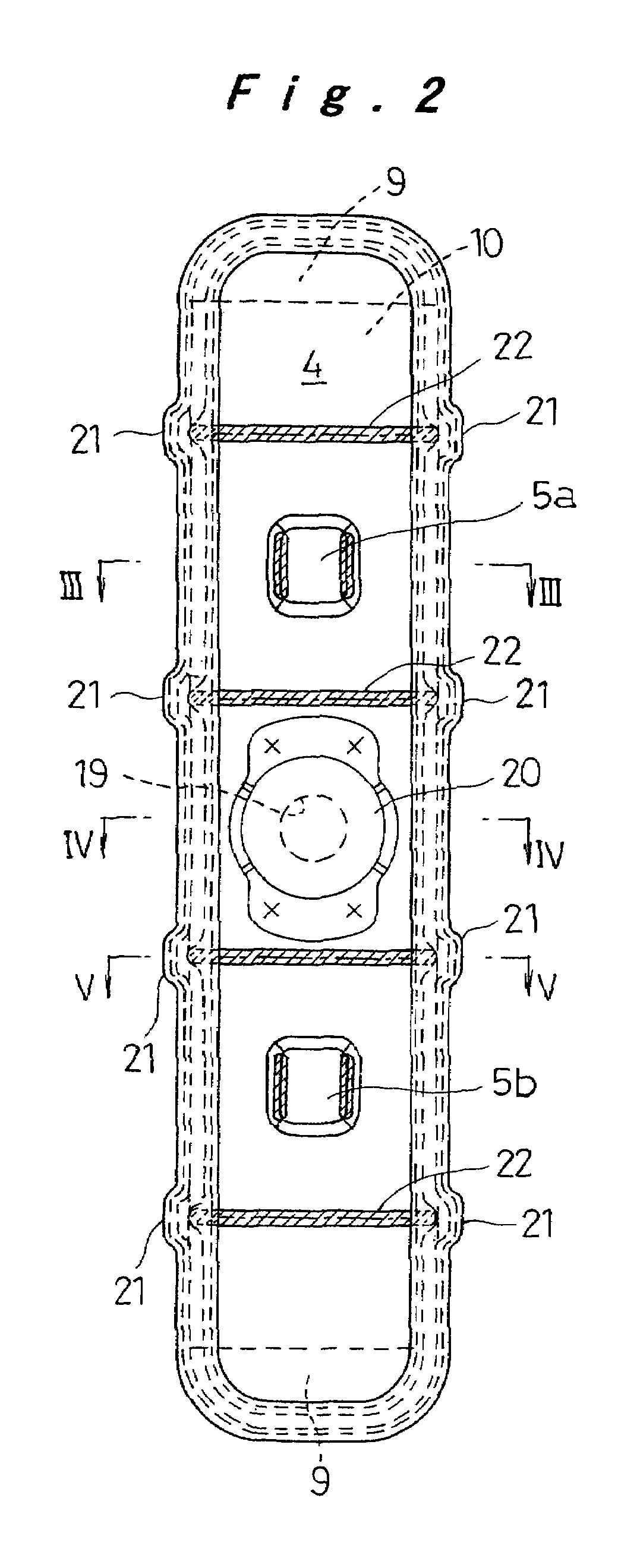Sealed rechargeable battery and battery module
a rechargeable battery and battery module technology, applied in the direction of cell components, final product manufacturing, sustainable manufacturing/processing, etc., can solve the problems of lowering battery performance, increasing component cost and fabrication cost, and poor so as to achieve high volume efficiency per battery output and increase lifetime and output.
- Summary
- Abstract
- Description
- Claims
- Application Information
AI Technical Summary
Benefits of technology
Problems solved by technology
Method used
Image
Examples
first embodiment
[0037]Hereinafter, a sealed rechargeable battery and a battery module according to a first embodiment of the present invention will be described with reference to FIGS. 1 to 6G.
[0038]FIG. 1 shows a battery module 1 in which a plurality of (in the illustrated example, six) sealed rechargeable batteries 2 are arranged in a row so as to be integrally and electrically connected to each other in series. Each of the sealed rechargeable batteries 2 is constituted by sealing one open end of an approximately prismatic metal case 3 having a rounded rectangular cross section with a meal sealing plate 4. Each of the case 3 and the sealing plate 4 is constituted by a steel plate plated with nickel so as to ensure the resistance against an electrolyte solution. Moreover, the sealing plate 4 is constituted by a steel plate having a large thickness so as to ensure the strength and the rigidity of the opening of the case 3.
[0039]A pair of connection projections 5a and 5b are formed on the sealing pl...
second embodiment
[0057]Next, a sealed rechargeable battery according to a second embodiment of the present invention will be described with reference to FIGS. 9 to 11E. The same components as those in the first embodiment are denoted by the same reference numerals, and the description thereof will be omitted.
[0058]In this second embodiment, as shown in FIGS. 9 and 10, current collectors 31 and 32 are respectively bonded to the positive electrode end face 14 and the negative electrode end face 15 with welding portions 33 through laser beam welding or electron beam welding. In the illustrated example, the welding portions 33 are provided at five positions at appropriate intervals.
[0059]A connection projection 34 is provided for the current collector 31. The connection projection 34 penetrates a sealing plate 36 through an insulating member 35 to externally project therefrom. An engagement ring 38, which is abutted against the outer face of the sealing plate 36 through an insulating plate 37, is engage...
PUM
 Login to View More
Login to View More Abstract
Description
Claims
Application Information
 Login to View More
Login to View More - R&D
- Intellectual Property
- Life Sciences
- Materials
- Tech Scout
- Unparalleled Data Quality
- Higher Quality Content
- 60% Fewer Hallucinations
Browse by: Latest US Patents, China's latest patents, Technical Efficacy Thesaurus, Application Domain, Technology Topic, Popular Technical Reports.
© 2025 PatSnap. All rights reserved.Legal|Privacy policy|Modern Slavery Act Transparency Statement|Sitemap|About US| Contact US: help@patsnap.com



